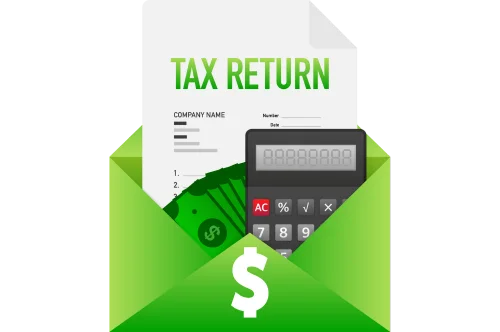Year-End Tax Planning for 2024: A Guide for Indian Taxpayers
As the financial year draws to a close, effective tax planning becomes crucial for minimizing tax liabilities and maximizing savings. In India, year-end tax planning is not just about investing in tax-saving instruments; it’s also about strategically utilizing deductions, exemptions, and rebates available under the Income Tax Act. Here’s how you can ensure you’re optimizing your tax planning in 2024.
1. Maximize Deductions Under Section 80C
Section 80C of the Income Tax Act allows individuals to claim deductions of up to ₹1.5 lakh per year for a wide variety of investments and expenses. The most common tax-saving options include:
- Public Provident Fund (PPF)
- Employee Provident Fund (EPF)
- National Savings Certificates (NSC)
- Tax-saving Fixed Deposits
- Life Insurance Premiums
- National Pension Scheme (NPS)
Make sure to fully utilize this ₹1.5 lakh limit before the year-end to lower your taxable income.
2. Take Advantage of Section 80D: Health Insurance Deductions
Section 80D allows deductions on premiums paid for health insurance. You can claim:
- Up to ₹25,000 for premiums paid for yourself, your spouse, children, and parents (₹50,000 for senior citizens).
- Additional deductions of up to ₹25,000 for premiums paid for parents who are under 60 years of age, or ₹50,000 if they are senior citizens.
This is an effective way to save taxes while ensuring financial protection for your family’s health.
3. Invest in the National Pension Scheme (NPS)
Under Section 80CCD(1B), additional tax benefits of up to ₹50,000 are available for contributions made to the NPS. This is over and above the ₹1.5 lakh limit under Section 80C, making NPS an attractive option for year-end tax planning.
Moreover, NPS offers long-term retirement savings, with a blend of equity and debt exposure, making it ideal for those planning for the future.
4. Claim Deductions for Home Loan Interest Under Section 24
If you have a home loan, you can claim a deduction of up to ₹2 lakh per year under Section 24(b) for interest paid on the loan. This is especially beneficial if you’re in the process of paying off the interest portion of your loan.
Additionally, under Section 80C, you can claim a deduction of up to ₹1.5 lakh for principal repayment. Combining both can significantly reduce your taxable income.
5. Revisit Your Salary Structure
It’s a good time to discuss your salary structure with your employer. Consider opting for components that are eligible for tax exemptions or deductions, such as:
- House Rent Allowance (HRA)
- Leave Travel Allowance (LTA)
- Special Allowances
By optimizing your salary structure, you can reduce taxable income, resulting in lower tax liability.
6. Utilize the Standard Deduction for Salaried Employees
Salaried individuals can claim a standard deduction of ₹50,000 from their total income, reducing taxable income directly. This deduction is available regardless of other investments or expenses, so be sure to factor it into your planning.
7. Take Advantage of Capital Gains Exemptions
If you’ve invested in long-term assets such as stocks, mutual funds, or real estate, you may qualify for capital gains exemptions. Under Section 10(38), long-term capital gains (LTCG) from the sale of equity shares and equity mutual funds are exempt up to ₹1 lakh.
For real estate, you can claim exemptions under Section 54 if you reinvest the sale proceeds in purchasing or constructing another property. It’s important to assess your portfolio and utilize these exemptions effectively.
8. Claim Rebates Under Section 87A
If your taxable income is less than ₹5 lakh, you are eligible for a rebate of ₹12,500 under Section 87A. This rebate directly reduces your tax liability and is a key element of tax planning for those with lower incomes.
9. Plan for TDS Adjustments
The last few months of the financial year are a good time to adjust your Tax Deducted at Source (TDS) to avoid overpaying or underpaying. If you have had changes in your income or deductions, informing your employer or other sources of income can ensure that the correct amount of TDS is deducted. You can also check your Form 26AS to track the TDS credited against your PAN and request corrections if necessary.
10. Review Your Investments for Tax Efficiency
Before the end of the year, review your investment portfolio for tax efficiency. Consider shifting investments to instruments that offer tax benefits, such as tax-free bonds or debt mutual funds for long-term capital gains, and review your capital gains tax liabilities for any planned asset sales.
Conclusion
Effective tax planning is all about taking advantage of the tax-saving tools and provisions available under Indian tax law. By utilizing deductions, exemptions, and rebates, you can significantly reduce your tax liability and maximize your savings. The year-end is the perfect time to assess your finances, make strategic investments, and plan for a tax-efficient future.
Make sure you take action well before the financial year ends, and consult with a tax advisor if needed to make the most of your tax planning. This proactive approach will help you start the new year with a more favorable financial outlook.
Our Tax Services

ITR Filing
ITR Filing services provide full assistance with Income Tax Return submissions, ensuring accurate and timely compliance with all tax regulations and statutory requirements for both individuals and businesses.

Tax Audit
A tax audit reviews financial records to ensure compliance with tax laws, verifying income, deductions, and expenses. It minimizes errors and helps businesses avoid penalties, ensuring accurate tax reporting.

E-Commerce Tax Services
Navigating taxes as an e-commerce seller can be challenging due to the unique complexities of online businesses. Here’s a quick overview of the essential tax services that can help simplify compliance and optimize tax savings





